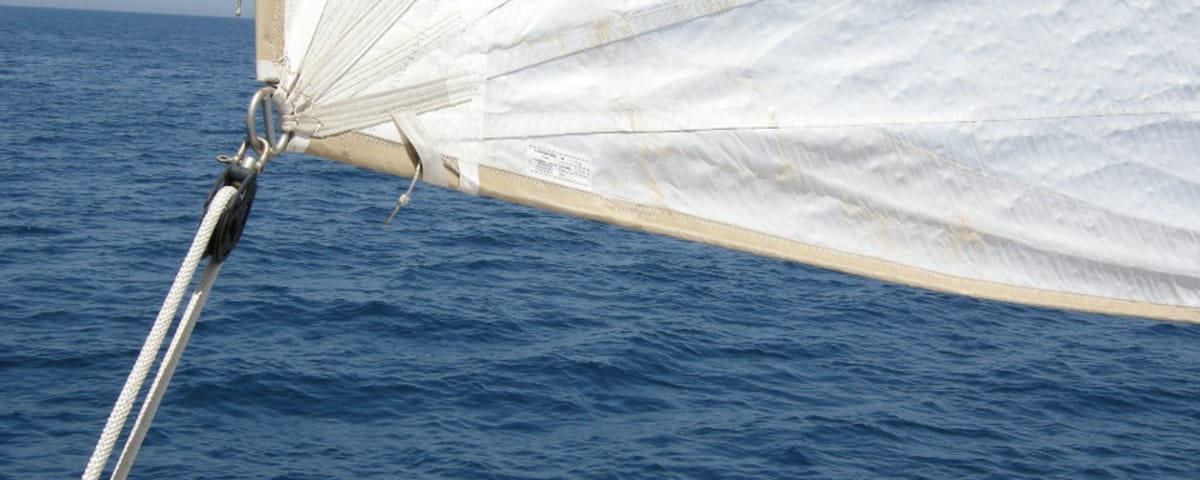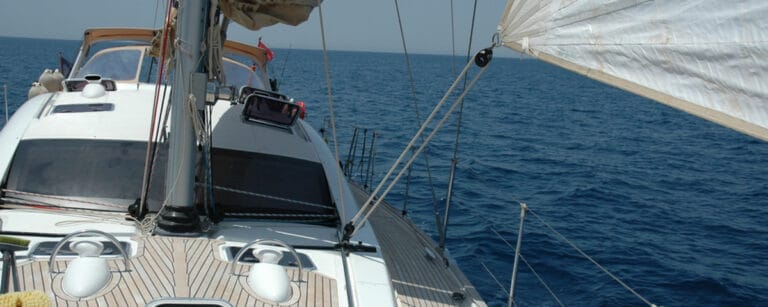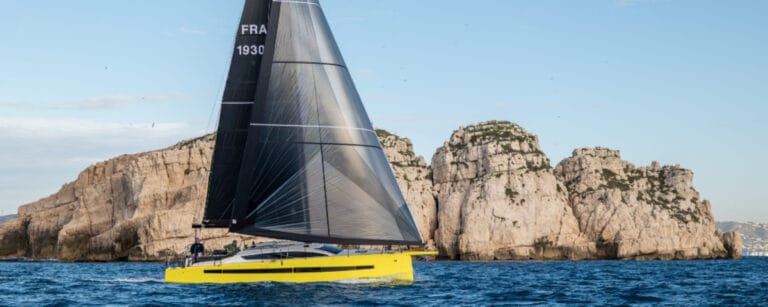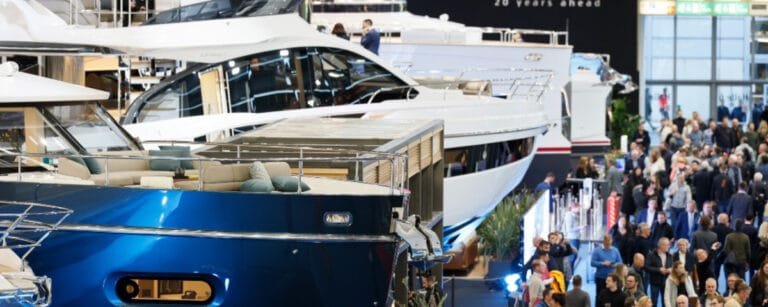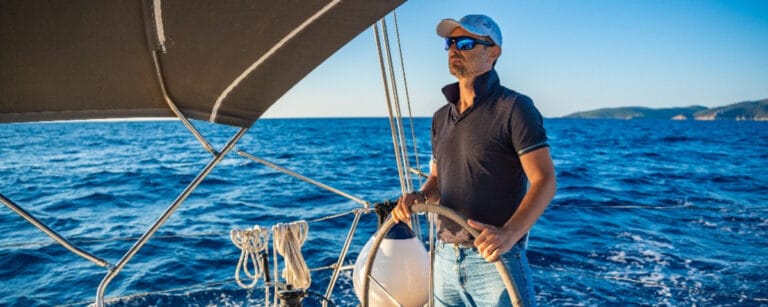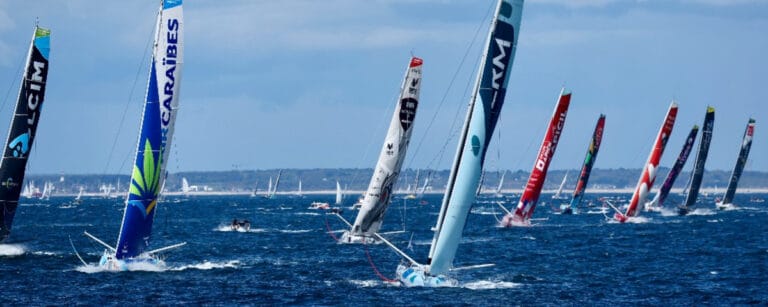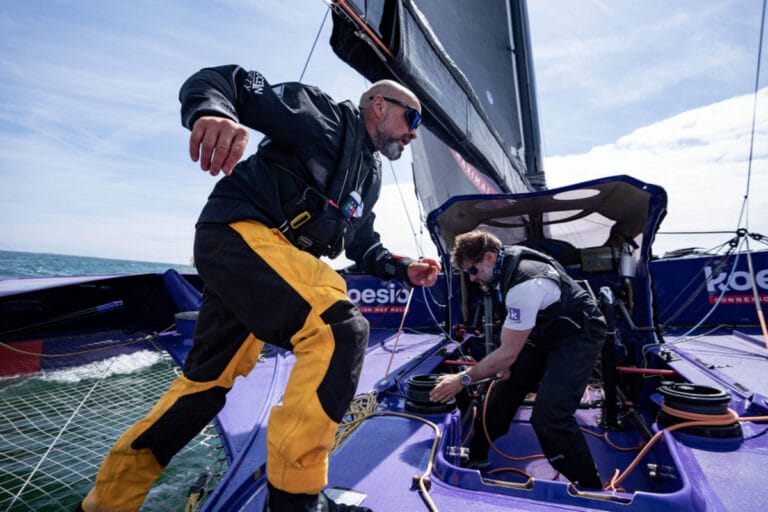Ropes: Choosing the right halyards and sheets
Understanding Rope Materials
In theory, two materials are primarily used for making ropes: polyester and Dyneema. However, these materials may be marketed under different names by various manufacturers, potentially referring to identical products. Some use the material’s name, while others use a commercial name. For the user, the important factors to consider are elongation at break, UV resistance, and abrasion resistance.
Rope Manufacturing Techniques
There are four main manufacturing techniques for ropes: twisted, hollow braid, braided core, and parallel core.
- Twisted Rope: The oldest technique, mainly used for mooring and anchoring.
- Hollow Braid: Made from a simple 16 or 24-strand braid of polypropylene or polyester. It’s lightweight but has limitations. It’s not suitable for winches, blockers, or jammers. Primarily used as protective sheathing or as a sheet in light winds on racing boats where minimizing weight is crucial.
- Braided Core: Consists of a braided core, which is the active part of the rope, covered by an outer braid. The core braid uses groups of strands (8 to 24) called bundles. The outer braid, with up to 32 bundles, protects the core. Well-suited for halyards and sheets.
- Parallel Core: This technique doesn’t use braiding for the active part. The core is simply made of parallel fibers covered by two sheaths: a compacting sheath to hold the fibers and an outer protective sheath. This construction results in a rope with minimal elongation.
Key Takeaways on Rope Construction
- Braided Core Rope: Advantage: Easy to splice. Disadvantage: Elongation varies depending on the material.
- Parallel Core Rope: Advantage: Minimal elongation, ideal for halyards. Disadvantage: Splicing can be challenging.
- Twisted Rope: Advantage: Easy to splice. Disadvantage: Can develop blisters. Well-suited for anchor lines and mooring.
- Hollow Braid: Advantage: Lightweight. Disadvantage: Limited use. Reserved for light-wind maneuvers (sheets on racing boats) or for covering other ropes.
Choosing the Right Halyards
The primary requirement for a halyard is minimal elongation. While cruising boats are less demanding than racing boats, some products are better suited than others. For cruising boats, a construction with a parallel polyester fiber core covered by a braided polyester sheath is ideal. This combination offers high strength (e.g., 10 mm diameter with a breaking strength of 1950 kg) with an elongation of around 4% at working load. Racers increasingly prefer halyards made from advanced materials like Dyneema (polyethylene). These halyards can also be used as sheets. For example, a halyard with a 24-strand braided polyester outer sheath over a parallel Dyneema HMPE (High Modulus Polyethylene) core, with a 10 mm diameter, has a breaking strength of 4500 kg and an elongation of less than 1% – twice as strong as a parallel polyester core with four times less elongation. However, the price is at least three times higher. A cost-effective solution is to use a smaller diameter, such as 6 mm (breaking strength 1800 kg), which is 50% cheaper. This provides superior performance in terms of elongation and weight (only 26 g/m). The only consideration is compatibility with sheaves and blockers. To prevent wear, the rope can be covered.
Selecting the Right Sheets
There isn’t a fundamental difference between a sheet and a halyard in terms of materials: polyester and advanced fibers are used for both. The difference lies in the construction. A sheet needs to have a good grip, work well on a winch, and be relatively flexible. Elongation is less critical than for a halyard. To balance these factors, the outer braided sheath is often discontinuous (cottony appearance), and the core is cabled or braided. For high-end, sheet-specific options, consider a construction with a cabled polyester core covered by a discontinuous braided polyester outer sheath (cotton feel). Elongation is around 6% with a breaking strength of 2550 kg (10 mm diameter). More technically advanced options include a Dyneema braided core covered with a polypropylene braided sheath. A 10 mm diameter rope of this type has a maximum elongation of 1% with a breaking strength of 3500 kg. For dinghies, a single braid made from a blend of Dyneema and polyester can be used.
For cruising, a mixed rope suitable for both halyards and sheets is often chosen. This simplifies inventory. These ropes often feature double braids of all polyester or parallel polypropylene cores covered with a polypropylene braided sheath. A mixed rope (sheet/halyard) with a polyester outer sheath and a three-strand polyester core has a maximum elongation of 10% at 50% of the breaking load. It offers good grip on blockers and jammers and is easy to splice. The same polyester rope with a parallel core has lower elongation (6%) but is more difficult to splice.
Rope Maintenance
Ropes are more or less sensitive to UV rays, but none are immune. For winter storage, remove any ropes that can be removed, such as sheets, boom vangs, and tackles. Before storing them in a dry place, rinse them thoroughly with fresh water. During the season, rinse them with fresh water to remove salt whenever possible. For halyards, which are usually left in place, rinsing is still beneficial. Do not leave them under tension during winter storage.
What not to do: Do not wash ropes in a washing machine, as this can damage the fibers. Regularly inspect ropes for damage, such as a damaged outer sheath caused by a defective sheave or pulley. Rotate halyards and sheets to prevent the same areas from constantly rubbing against sheaves and pulleys.
The rope budget on a sailboat is significant, so maintenance is important. However, ropes are consumable items that will eventually need to be replaced. A 10-meter sailboat typically has around 200 meters of various ropes. When replacing ropes, determining the length of sheets is easy by comparing them to the old ones. It’s less obvious for halyards. Consider the mast height (twice) and the return to the cockpit (depending on the configuration). Add a few extra meters to allow for periodic trimming to move wear points.
Common Rope Materials
Seven main materials are used for modern rope manufacturing. However, the names used in catalogs are often interpretations by manufacturers, often to justify the price. The following provides a guide to material names and their key characteristics.
Final Thoughts
The different ropes used on a boat have specific functions. It’s common to see boats moored with old halyards or sheets made from twisted ropes, which is unsafe. Equipment catalogs describe ropes based on their intended use and key characteristics. Refer to these catalogs for guidance. Choose ropes based on their intended use, not just their price.
Choosing the right rope means understanding its intended use. Each material, manufacturing technique, and construction meets a specific need in terms of strength, elongation, and durability. While modern fibers offer significant performance gains, they also require increased attention to wear and compatibility with existing equipment. Taking the time to assess needs, compare solutions, and regularly maintain ropes ensures reliable maneuvers and safety on board.
Enjoyed this post by Thibault Helle? Subscribe for more insights and updates straight from the source.

